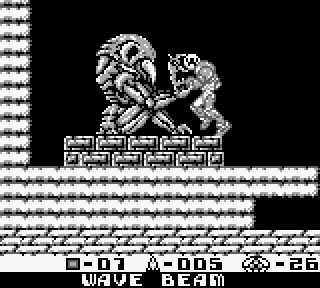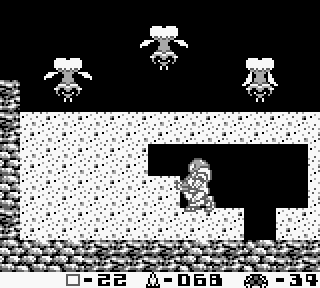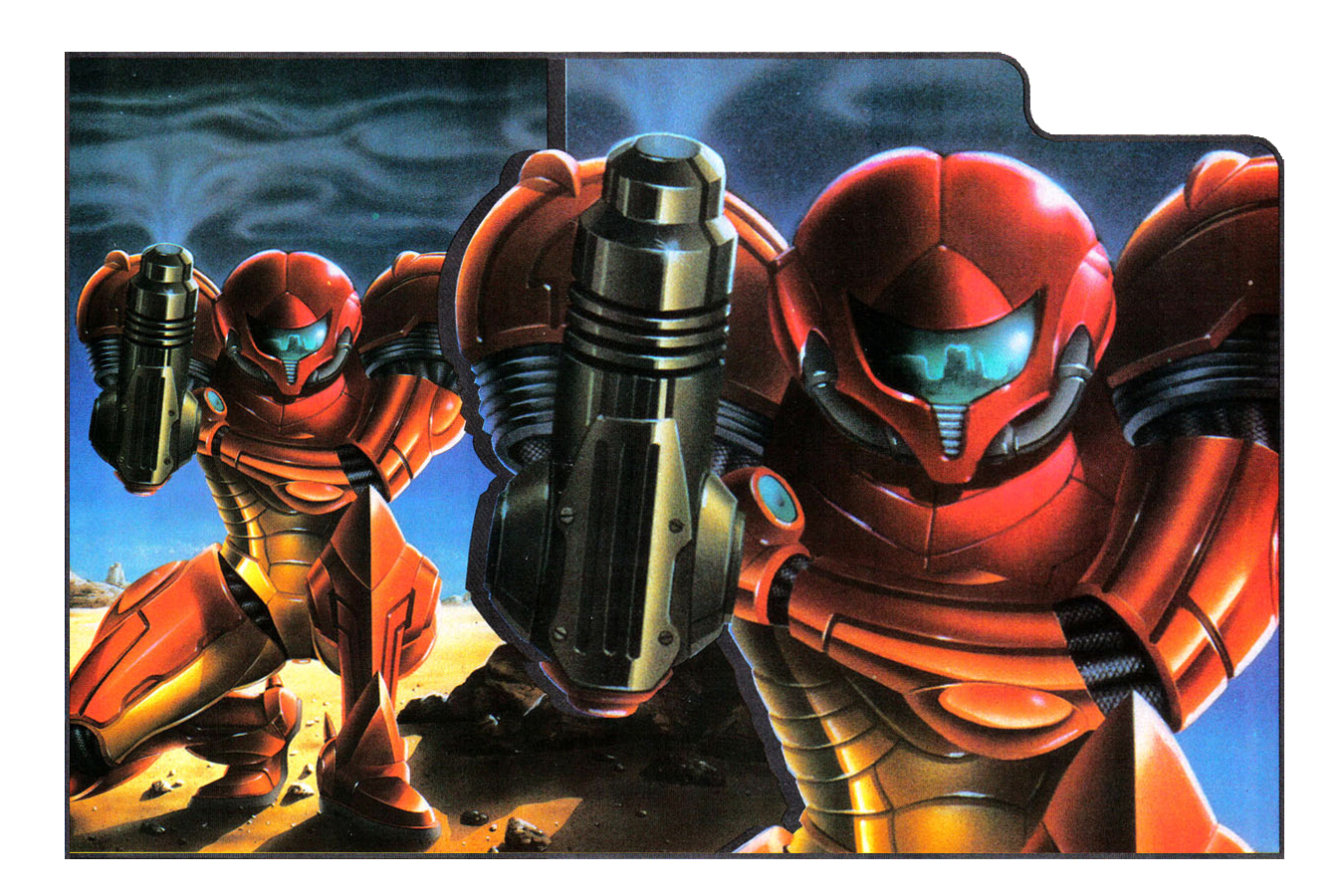More often than not, Metroid II: Return of Samus gets a fairly bad rap. Released for the original Game Boy in late 1991, five years after Metroid for NES, Metroid II: Return of Samus received fairly mixed reviews. Nintendo’s decision to make Samus Aran’s sprite super-detailed and super-sized– its height took up a third of the Game Boy’s screen– caused gamers to find themselves running into just about every enemy in the game. This was made even worse by the enemies’ designs, which, being mostly geometrical and rather uninspired, were often indistinguishable from the similarly bland scenery. Gamers who ventured onto planet SR388 to exterminate the galaxy’s only remaining Metroids (a genocide apparently acceptable in the Metroid universe) found their journey chock-full of blocky sand, endless ruins, and generally labyrinthine level design. Indeed, it’s a wonder Samus Aran managed to escape SR388 at all, with it being more like a prison planet than an actual life-sustaining world: and so, it’s even more wondrous that Metroid II: Return of Samus actually holds one of the most important places in the Metroid pantheon.
 But this might sound a bit suspicious to the skeptical gamer– and indeed it should, considering the usual attitudes toward games with little style and even less substance. Few games have followed the Metroid II: Return of Samus path, where a game designed around a tedious trek through a seemingly endless maze of a planet has managed to succeed. Financially speaking, Metroid II succeeded not only by its Metroid name (though that certainly helped), but also Nintendo’s famous first-party efforts to boost sales with, for example, the Player’s Choice label it ceremoniously slapped on the cartridge. Nintendo Power, still a major force back in 1991, further spotlighted the game in a rare case of a Game Boy game making the front cover.
But this might sound a bit suspicious to the skeptical gamer– and indeed it should, considering the usual attitudes toward games with little style and even less substance. Few games have followed the Metroid II: Return of Samus path, where a game designed around a tedious trek through a seemingly endless maze of a planet has managed to succeed. Financially speaking, Metroid II succeeded not only by its Metroid name (though that certainly helped), but also Nintendo’s famous first-party efforts to boost sales with, for example, the Player’s Choice label it ceremoniously slapped on the cartridge. Nintendo Power, still a major force back in 1991, further spotlighted the game in a rare case of a Game Boy game making the front cover.
But let’s go beyond the money.
Let’s face it: Nintendo’s not exactly known for its attention to story detail. Mario and Link save their respective princesses time and time again, with few breaks in between; when Nintendo’s feeling really adventurous, it throws travel through space and time through the mix, which, though nice, doesn’t (usually) change the general plotline a whole lot. And, with a couple of exceptions, Nintendo doesn’t like to establish much continuity between separate games in a franchise (Editor’s note: Nintendo has since come out about a secret, master timeline to the Zelda series). However, with Nintendo’s Metroid series, the entire thread of the storyline– that is, all the reasons Samus Aran gets to monologue through games like Super Metroid and Metroid Fusion –retains itself throughout each game, with each game in the timeline directly affecting the next. And Samus Aran’s favorite brooding point– indeed, the core of the Metroid series’ most beloved games –lies directly in Metroid II: Return of Samus.

Yes, yes, it’s all true about Metroid II’s rather lackluster technical qualities, but we’re discussing Samus Aran finding a (TWO-DECADE-OLD SPOILER ALERT) baby Metroid here. We’re discussing Nintendo setting the stage for the beloved Super Metroid three years later, and Metroid Fusion a whopping eleven years later. We’re discussing how Samus Aran discovered this baby Metroid– without even so much as a name or even speech — in the wake of the Queen Metroid, which then single-handedly spawned the storylines of two future Metroid games. Not so many characters have done that, least of all in a Nintendo franchise. Not so many can claim to even have tried.
Even ignoring the vast amount of equipment Metroid II: Return of Samus brought to the franchise (the Space Jump, Spider Ball, Spazer Beam, and Plasma Beam should sound familiar to Metroid veterans), the game stands for itself among its franchise peers. Sure, it has quite its share of problems, but that’s a sacrifice I’d make any day if that means getting a game like Super Metroid out of it. A stinker in a pile of great games, after all, just makes all the rest look even better.




 ShareThis
ShareThis








Only Metroid game I haven’t played/beaten. One day (when the 3DS gets its own virtual console) I will finally explore Samus’ second adventure.
“Released for the original Game Boy in late 1991, five years after Metroid for NES, Metroid II: Return of Samus received fairly mixed reviews.”
GameRankings reports an 80% average, while Nintendojo gave the title both an 8/10 and a 9/10– not too mixed it seems…
While it may not be as good as the other entries in the franchise, by no means should it be thought of as a stinker. It’s like “Cars” in the Pixar library– definitely their worst work, but still pretty damn good.
Really, think of Metroid is to Alien as Metroid II is to Aliens: http://www.metroid-database.com/features/alien.php
I loved this game, at the time I thought it was a great approach to have you hunt down the last of the metroids and have them keep getting stronger as you go. The mazelike structure didn’t bother me either, I felt it just expanded on the first game, Also to get a full blown sequel on a portable was pretty cool at the time too
Don’t forget the save points! The original Metroid had you put in a big long password, then started you out at the last elevator you used with barely any energy. I appreciate the spider ball and the story continuity as much as the next guy, but there was no sight more welcome throughout the Prime sub-series than the save points.
Completely disagree that the game is a “stinker”. I still found it to be a fantastic play. I remember buying it when it was released and was not disappointed. I’d gladly play it over any of the Prime games.